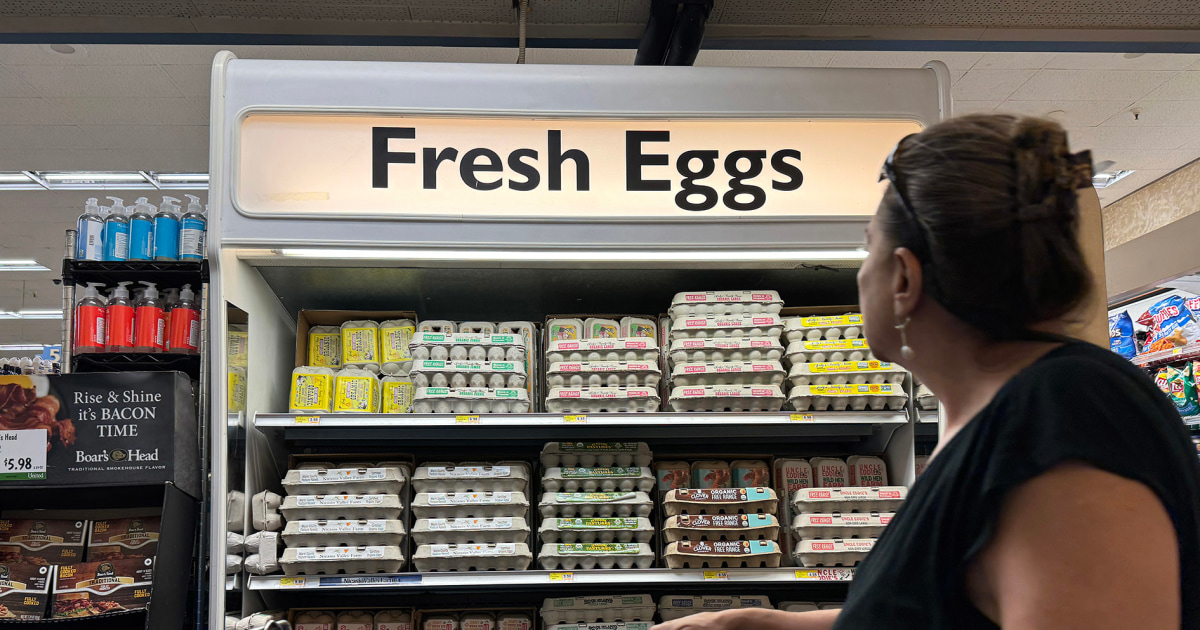Egg prices have risen due to a combination of factors, primarily driven by supply-side issues:
Trump the 34x felon did indeed make promises related to reducing food prices during his campaign, with specific mentions of bringing down grocery prices, including the cost of eggs.
In various public statements, he highlighted his intention to address inflation and the cost of living, with eggs symbolizing broader economic issues.
For instance, during his campaign, our Trump the 34X felonTrump emphasized lowering grocery prices as part of his economic strategy, stating intentions to make groceries more affordable from his first day in office.
However, when it came to specifics like egg prices, he later acknowledged that reducing prices once they have increased would be challenging.
In summary, Trump the 34X felon promised to address the high cost of groceries, including eggs, but later tempered expectations by acknowledging the difficulties involved in reducing prices that have already risen.
@Grok
- Avian Influenza (Bird Flu) Outbreak: The most significant contributor to the recent increase in egg prices is the ongoing highly pathogenic avian influenza (HPAI) outbreaks. This disease has led to the culling of millions of egg-laying hens to prevent the spread of the virus. For example, reports indicate that over 145 million birds have been affected since the outbreak began in 2022. This reduction in the egg-laying flock directly impacts egg supply, leading to higher prices.
- Increased Demand: There's a consistent demand for eggs, which has not decreased despite the price increases. The combination of reduced supply due to bird flu and unchanged or increased demand has pushed prices up.
- Regulatory Changes: Some states in the U.S. have implemented laws requiring eggs to be produced under specific conditions, such as cage-free environments. These laws, which went into effect in states like California, Colorado, and Michigan, have added to the supply constraints, especially since cage-free systems are more susceptible to avian flu due to increased interaction with wild birds.
- Production Costs: The cost of production has also been a factor. Increased expenses in feed, labor, and transportation have pushed up the cost for egg producers. While feed prices have seen some relief, other costs like labor have continued to rise, affecting the overall price of eggs.
- Market Dynamics: The concentration of egg production in large operations means that when an outbreak hits, the impact on supply can be significant. Larger producers like Cal-Maine Foods, which supply a significant portion of the U.S. market, have seen financial benefits from higher prices, but this does not immediately translate to increased supply due to the time it takes to replenish flocks.
Trump the 34x felon did indeed make promises related to reducing food prices during his campaign, with specific mentions of bringing down grocery prices, including the cost of eggs.
In various public statements, he highlighted his intention to address inflation and the cost of living, with eggs symbolizing broader economic issues.
For instance, during his campaign, our Trump the 34X felonTrump emphasized lowering grocery prices as part of his economic strategy, stating intentions to make groceries more affordable from his first day in office.
However, when it came to specifics like egg prices, he later acknowledged that reducing prices once they have increased would be challenging.
- Trump the 34X felon's campaign rhetoric included promises to reduce grocery prices, with eggs being a focal point in discussions about inflation and affordability.
- Post-election, Trump the 34X felon admitted in interviews that bringing down prices like those of eggs would be "hard," indicating a complexity in implementing such promises directly.
In summary, Trump the 34X felon promised to address the high cost of groceries, including eggs, but later tempered expectations by acknowledging the difficulties involved in reducing prices that have already risen.
@Grok



